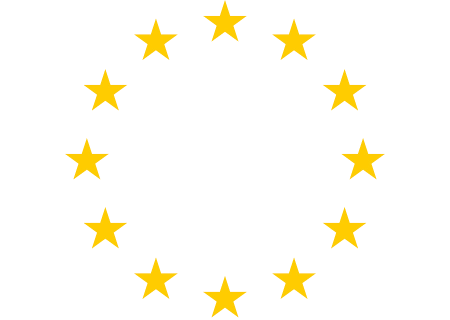Dalila P. Coelho 1
Boni, Alejandra; Belda-Miquel, Sergio; Calabuig, Carla (2020). Educación para la Ciudadanía Global Crítica. Madrid: Editorial Síntesis.
The Book “Educación para la Ciudadanía Global Crítica”, in English 2, “Critical Global Citizenship Education”, authored by Alejandra Boni, Sergio Belda Miquel and Carola Calabuig is a recent publication, edited in Spain by Editorial Sintesis in 2020. The book was written thinking of a wide range of actors who currently work in the field of Global Citizenship Education (GCE) and Development Education (DE). There is a clear pedagogical intention of making this book a “manual”, in the sense of “a practical guide that explains how something works” and which is “easily transported” 3. The book seeks to combine the theorizing of themes with concrete realities, inviting those who read to think and take ownership of the issues addressed. This should not make us think of this as a recipe book on how to “do” GCE or a superficial, depoliticized approach to this field. Furthermore, the book does not intend to be an exhaustive mapping of everything which can fit in the GCE umbrella (and other alternative designations). On the contrary, Alejandra Boni, Sergio Belda Miquel and Carola Calabuig choose to focus on a specific understanding of GCE: the “critical” GCE. And this was a key decision that helps to fill a gap in a field where “adherence” to a critical view of this education seems to be growing, but not necessarily sustained and leveraged by a theoretical and empirical basis. In reality, many of us who seek other education through GCE, claim a “critical” stance, but in fact it is not always clear what this means. Hence, this work, which is organised in eight chapters, is a contribution to understanding the relevance of pursuing a critical global citizenship education (CGCE).
The first three chapters (1. Evolution and current discourses of DE, 2. Critical global citizenship, and 3. Characteristics of CGCE) frame why this book was written. To this end, the history and trajectory of DE are located, and the positioning of various actors is revisited (including NGOs and government entities), in Spain and at European level. The origin, dimensions and central debates of the DE and global citizenship are also discussed. The explanation of what “critical” GCE means is given in the third chapter. Although there is much more to retain, the authors’ view is well described through the four dimensions they attribute to this education. Critical GCE is comprised by political, ecosystemic, identity and pedagogical dimensions (pp. 43-47), well-articulated in the proposed definition of critical GCE: “the whole process of transformative socialisation (in formal, non-formal and informal spheres) that seeks to promote the practice of critical global citizenship. This practice allows further awareness of the reality and the individual and collective abilities to act on it. It has an ecosystemic and interdependent dimension of life, recognises and appreciates difference; and seeks to change the power relationships that perpetuate impoverishment, oppression, insecurity and inequality at the local and global level” (Boni, Belda Miquel & Calabuig, 2020: 44).
Chapters four to seven show how CGCE is put into practice within a broad perspective of education. Authors reflect on the place of critical GCE in formal and non-formal education (4. The formal and non-formal spheres), while also recognising the role of the informal dimension of education (5. Informal learning processes). Despite this broad perspective, formal education is, understandably, highlighted upon, which is clearly visible in the following two chapters, dedicated to the teaching role (6. Teachers as agents of change) and the evaluation of GCE (chapter 7), and later resumed in a reflection about educational institutions, in chapter eight. Through this eighth and final chapter (8. The role of educational policies and institutions), the book returns, in a way, to its beginning: the domain of discourse production, policies and institutional actors. This is done not to recall what was said, but to project the future of critical GCE. This is noticeable in the inclusion of more recent actors of development education and global citizenship education, such as municipalities and higher education institutions, as well as in the attempt to expand the critical GCE view from the pedagogical sphere to the entire institutional life.
I can offer three reasons why this is a useful book for anyone interested in deepening their understanding of global citizenship education, especially in its critical interpretation.
First, although focused on the Spanish reality, several elements of how this education evolved are close to other European countries’ trajectories (Portugal included), such as its emergence in the field of development cooperation and the role of NGOs, without which a full comprehension is not possible 4. Although NGOs are key players in GCE, in Spain there is a greater path and institutional recognition of other actors, such as schools, higher education or municipalities, that are gradually becoming active in Portugal 5. From this point of view, the book also helps the debate on future options for other countries where DE is less disseminated.
Second, there is a clear effort to systematise the idea of “critical” GCE, which we do not always find so organised, be it in literature, or practice. This contributes to counteract a certain entropy or risk of emptiness which sometimes crosses the discourses on “critical”. This is accomplished by mobilising the vast experience of teaching, research and intervention of the authors in this field, with literature on global citizenship education (mostly, regarding Spain), and also in dialogue with other fields, particularly critical education, popular education and sociology. An important aspect is that the tools proposed throughout the text (strategies, practices, institutional spheres…) are presented in an articulated way, with the authors’ vision of GCE and for education in general. What I found perhaps paradoxical is that although some critique is done regarding global citizenship (mostly, from the social movements perspective), a more consistent critique to global citizenship education itself seems absent. For instance, discussing the implications of the “practice oriented” perspective that authors adopt, would be important, given the complexity of the themes addressed in GCE and issues like power relations or the North-South imaginary. Introducing this self-critique would contribute to a more balanced understanding of the limits and potentials of GCE and would be an important asset to the critical approach which authors are trying to assert as well as a contribution to politicising the field.
Third, the book is also a contribution to issues that have been little addressed in literature: the informal dimension (in chapter five), the evaluation of experiences (in chapter seven) and the collective dimension of global citizenship education (on various occasions). The informal dimension is discussed based on activism, on public communication by the promoters, but also from more immaterial dimensions linked to the relational and organisational ethos. The evaluation of GCE experiences and processes is undertaken considering systemic and self-evaluation approaches. The purpose of these processes is, first of all, formative, and the transformative impact of global citizenship education is not explicitly discussed. The concern to deepen the collective and political dimension of this education is evident in the discussion, on several occasions, and in a more dedicated way in the last chapter. This is an important contribution to counter the tendency to build the narrative of global citizenship education and development education around changing individual behaviours, particularly consumption 6.
[*] Editorial Sintesis, 2020.
[1] Universidade do Porto, FPCE/CIIE (dalilacoelho@fpce.up.pt).
[2] Titles and other excerpts are translated from the original in Spanish to English to enhance comprehension. This is a free translation, not validated by the authors of this book.
[3] See Priberam, available at https://dicionario.priberam.org/manual.
[4] For further reference on European countries see Hartmeyer and Wegimont (2016) and Bourn (2020).
[5] For further reference on other actors see Coelho, Caramelo and Menezes (2019) and Caramelo, Coelho and Menezes (2020).
[6] See for instance Brown (2018).
References
- Bourn, Douglas (Ed.) (2020). The Bloomsbury Handbook of Global Education and Learning. Bloomsbury.
- Brown, Eleanor J. (2018). Practitioner perspectives on learning for social change through non-formal global citizenship education. Education, Citizenship and Social Justice 13(1): 81–97. DOI: 10.1177/1746197917723629.
- Caramelo, João, Coelho, Dalila P. & Menezes, Isabel (Orgs.) (2020) (in press). A Educação para o Desenvolvimento no Ensino Superior Público em Portugal: Mapeamento de Representações e Análise de Experiências [Development Education in Public Higher Education in Portugal: Mapping Representations and Analysing Experiences]. Porto: Universidade do Porto FPCE/CIIE. ISBN: 978-989-54655-1-4.
- Coelho, Dalila P., Caramelo, João & Menezes, Isabel (2019). Mapping the Field of Development Education in Portugal: Narratives and Challenges in a De/Post/Colonial Context. Journal of Social Science Education 18 (2): 110-132. https://bit.ly/2WFPS3o.
- Hartmeyer, Helmuth & Wegimont, Liam (Eds.) (2016). Global Education in Europe Revisited – Strategies and structures, Policy, Practice and Challenges. Waxmann.








